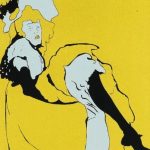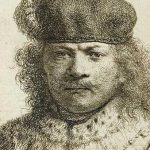Artist Peter Nixon’s Goddesses of the Moon
Written for Park West Gallery by Artist PETER NIXON
My recent paintings, The Moon Triptych, were originally inspired by a book I read some time ago; Moondust by Andrew Smith – a poignant account of the NASA mission, containing moving interviews with all the astronauts. I was reminded of the book recently – on the occasion of the 40th anniversary of the moon landing in 2009 – and decided to produce a triptych to celebrate the magical and momentous memory from my childhood.
Many of the subjects of my paintings are taken from Greek and Roman myths so I decided to paint the goddesses representing three phases of the moon. Their Greek/Roman names are Selene/Luna, Artemis/Diana and Hecate/Trivia – and they correspond to the crescent, harvest and full moons respectively. As a connecting element in the paintings, I dramatically silhouetted the three goddess figures against a full moon.
In Selene/Luna (shown below), the picture has insets with depictions of the goddess from ancient illustrations – a horse’s head symbolizing her chariot, the torch she traditionally carried and an astronaut’s footprint from the surface of the moon. There is also a quote from a painting by the German artist Caspar David Friedrich showing two figures gazing at the moon.
In Diana/Artemis (shown below), the goddess stands dramatically flexing her bow as this lunar phase was also known as the “Hunter’s Moon.” In addition to the depiction of an astronaut, there are also insets with representations of her from Greek vases and Roman statues, and a painting by the romantic English artist Samuel Palmer, who was famous for his moonlit landscapes.
In Hecate/Trivia (shown below) there are insets showing the Lunar Module and ancient portrayals of the three-faced goddess, who was also associated with crossroads and another dreamy Samuel Palmer landscape. This picture presented a problem in that I had used the full moon as a backdrop in the other two paintings whereas Hecate/Trivia characterizes the phase of the moon when it is below the horizon. I resolved this by placing the horizon high up in the picture as a line of buildings.
Across the top of each painting are the four phases of the moon. However, as there only three goddesses, as a visual joke I placed a silhouetted self-portrait against the fourth moon.
Park West Gallery would like to thank Peter Nixon for sharing this wonderful glimpse into his creative process and for describing so prolifically the inspiration for his recent artworks. We certainly look forward to reading more from the artist in the future!
Related Links:
- Learn more about the artist Peter Nixon bio.parkwestgallery.com
- View selections of Peter Nixon’s artwork available at Park West Gallery sales.parkwestgallery.com








